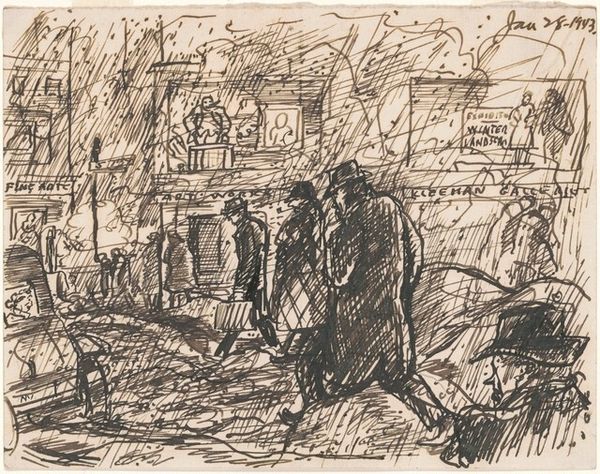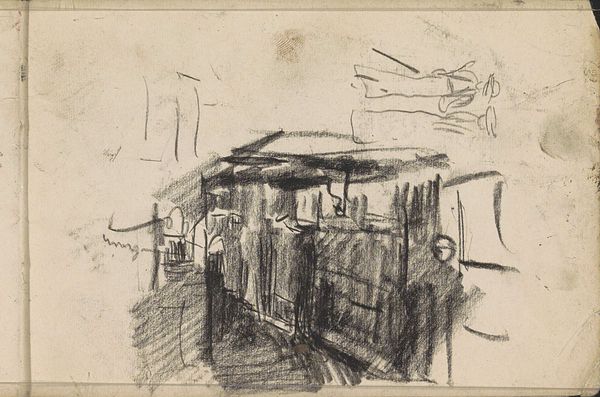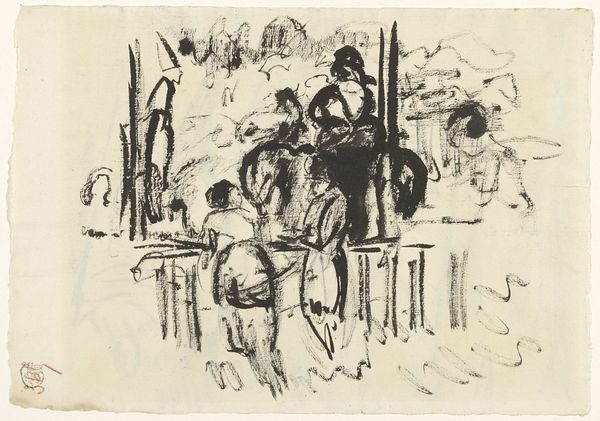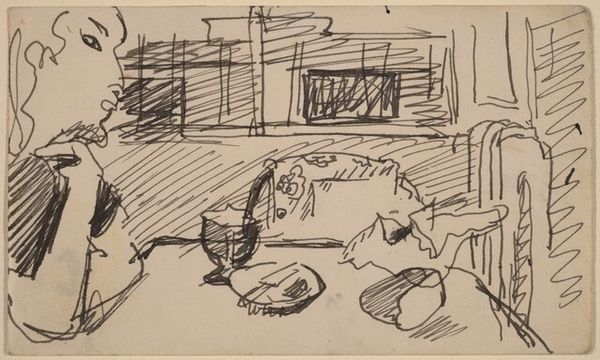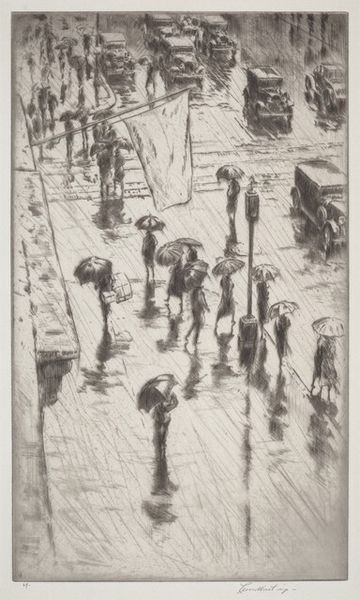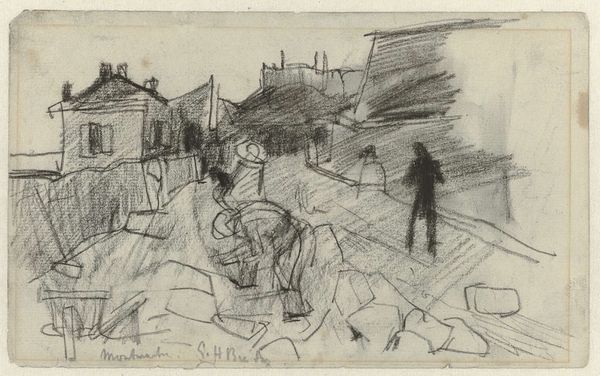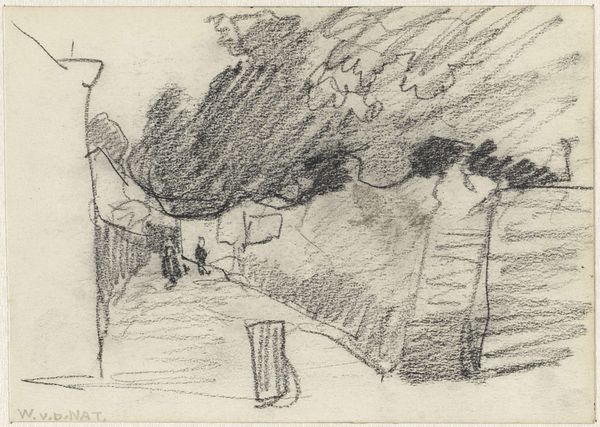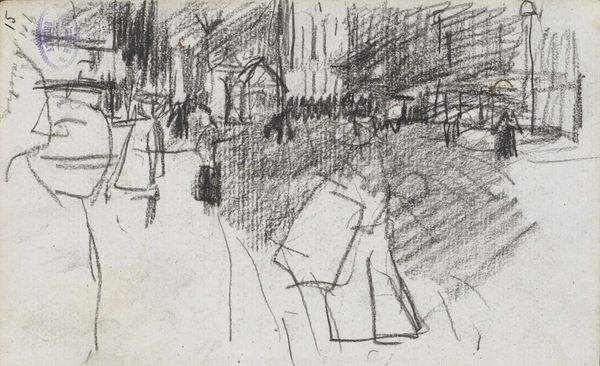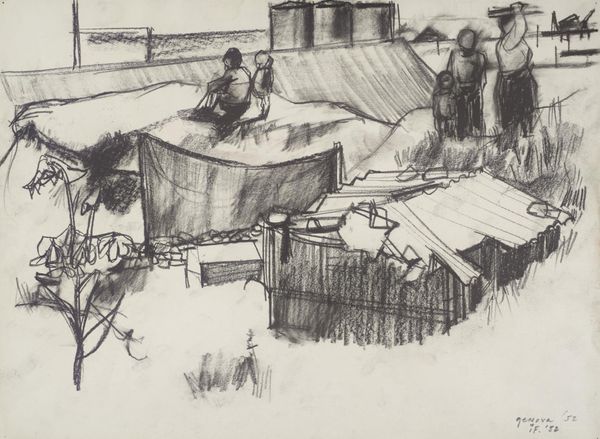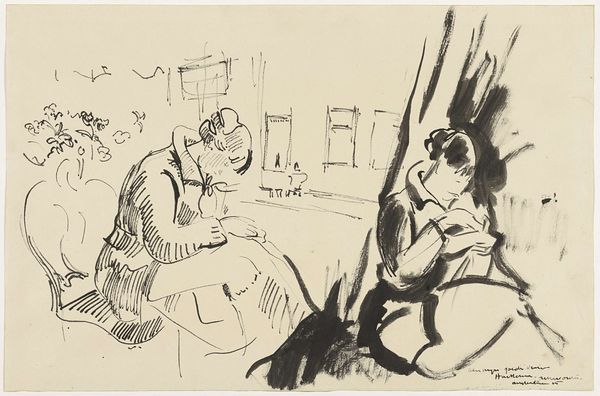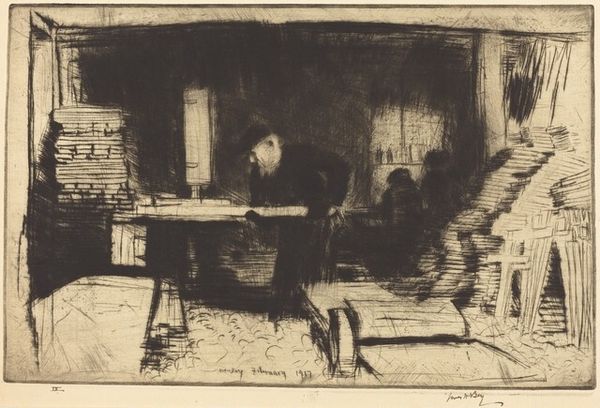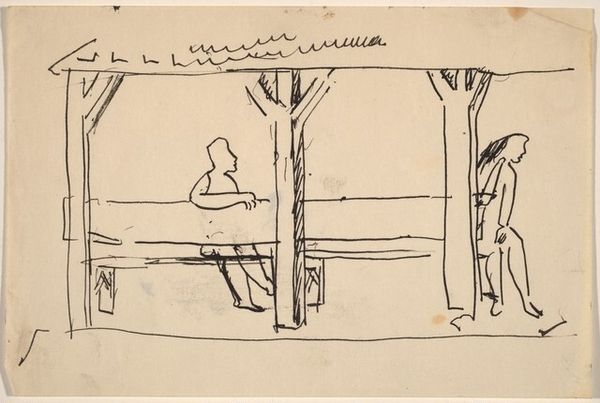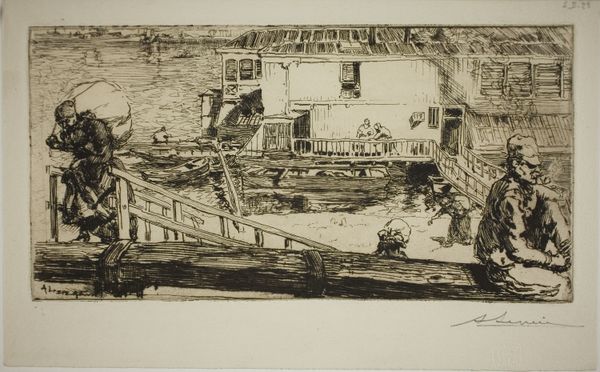
drawing, ink
#
portrait
#
drawing
#
ink drawing
#
pen drawing
#
pen sketch
#
ink line art
#
personal sketchbook
#
ink
#
ink drawing experimentation
#
pen-ink sketch
#
expressionism
#
pen work
#
sketchbook drawing
#
sketchbook art
Dimensions: sheet: 10.3 x 13.6 cm (4 1/16 x 5 3/8 in.)
Copyright: National Gallery of Art: CC0 1.0
Curator: The year is between 1922 and 1925. Edvard Munch sketches in ink "The Artist and Model in the Living Room at Ekely." I find it interesting that Munch pictures himself in his own drawing. It looks spontaneous and raw. What do you see? Editor: I’m struck by the seeming isolation between the two figures. It feels like they occupy the same space but are emotionally distant, if that makes sense in a pen drawing? I wonder, what narratives might be hidden in the seemingly simple image? Curator: Excellent question. Munch's later years, especially after the turn of the century, are often viewed through the lens of his mental health struggles. Could this drawing, even in its sketched form, be a commentary on the artist’s sense of self, his relationship to his work and perhaps to women? The lack of clear connection between the figures encourages this view. What about the setting, does it spark any ideas? Editor: Yes, actually, it is intriguing! I didn't think about that. It looks so bare... almost like a stage. The stage of art. Could it represent something about the role of art? Curator: Precisely! Is the "stage" a space where Munch, an artist, contemplates his place and purpose in art? How can we frame art, artists, models in that particular time? Is he maybe asking a question about the ethics of the male gaze, and is that what he is attempting to convey to us through this sketch? Editor: That’s fascinating. It gives a new depth to what seemed like just a quick sketch. Considering those social issues and Munch’s mindset completely transforms my interpretation. Curator: Right, we need to look at how those intersectional ideas can change the way we appreciate artwork and our understanding of society and how this interacts with artistic interpretations. Editor: I completely agree! Considering the cultural background gives the drawing an entirely different emotional impact.
Comments
No comments
Be the first to comment and join the conversation on the ultimate creative platform.
